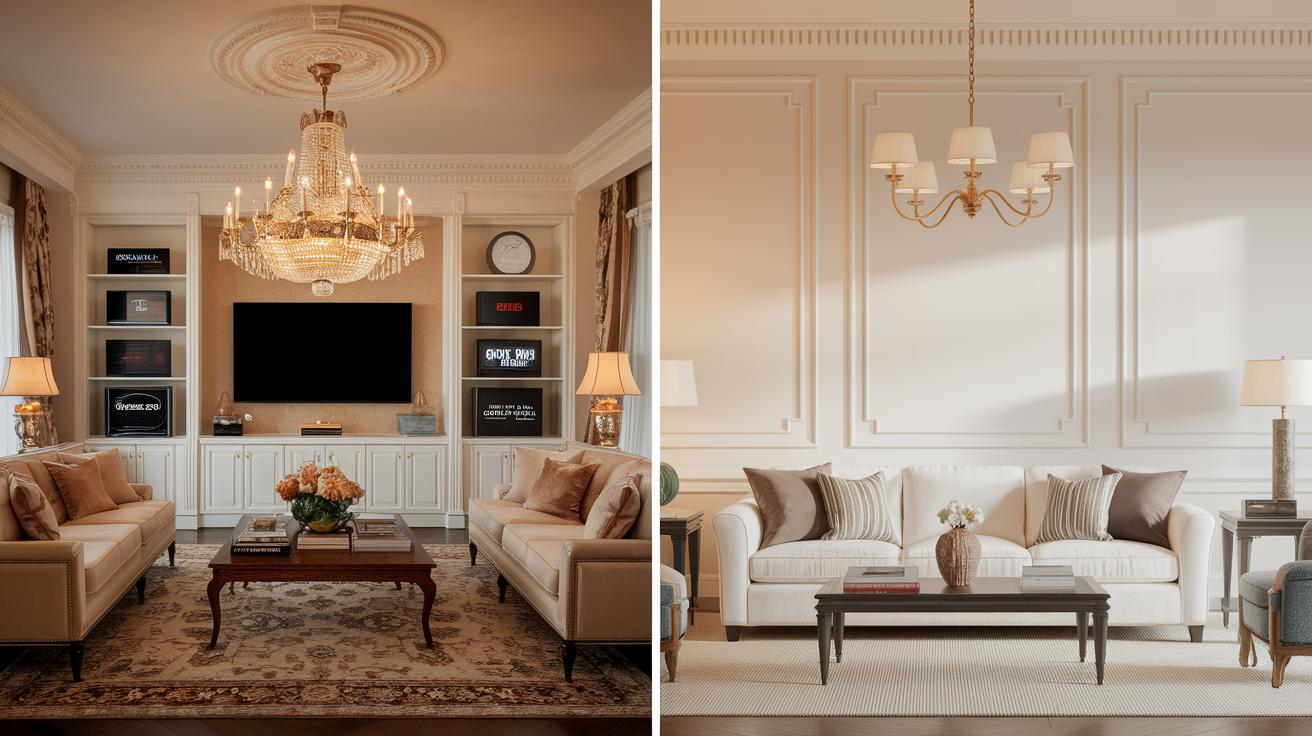What You Need to Know
- ✨ Brand Obsession: Middle-class individuals often prioritize brand names, associating them with quality and status, while the wealthy seek unique and bespoke options.
- 🚗 Flashy vs. Understated Cars: While middle-class people might invest in flashy cars as status symbols, the wealthy prefer understated vehicles that emphasize comfort and reliability.
- 🏠 Home Decor Styles: Middle-class homes might favor opulent decor to impress, whereas the wealthy lean towards minimalistic and timeless designs, valuing subtle elegance.
- 📱 Social Media Presence: Middle-class individuals often use social media to showcase their achievements, while the wealthy tend to maintain a low profile, valuing privacy and discretion.
- 🎉 Extravagant Celebrations: Milestone events in the middle class often involve lavish parties, whereas the wealthy might opt for intimate gatherings, prioritizing meaningful experiences over grand displays.
In a world where social classes can dictate not only our spending habits but also our lifestyle choices, it’s intriguing to explore what differentiates the middle class from the wealthy. While many people strive to climb the economic ladder, there are certain habits and lifestyle choices that the middle class often embraces, which the wealthy might find, well, a bit tacky. This post delves into eight such habits that spark a stark contrast between these groups, offering insights into social dynamics and perceptions.
1. Brand Obsession
Middle-class individuals often prioritize brand names when making purchases, believing that owning items from well-known brands equates to quality and status. In contrast, the wealthy tend to value quality over branding, opting for bespoke or lesser-known brands that offer uniqueness and craftsmanship. This preference for brand logos can come across as tacky to those who value discretion and exclusivity.
2. Flashy Cars
Owning a flashy car is often a dream for those in the middle class, symbolizing success and achievement. However, the wealthy often prefer to drive cars that are understated yet luxurious, valuing comfort and reliability over ostentation. The choice to invest in flashy vehicles can be seen as an attempt to flaunt wealth, which may be perceived as tacky by those who have long surpassed such symbols of status.
3. Over-the-Top Home Decor
Middle-class homes might feature elaborate decor, often with a focus on impressing guests. From large chandeliers to ornate furniture, the intention is to convey affluence. However, the wealthy often lean towards minimalistic and timeless designs, valuing simplicity and elegance. This love for opulence in home decor can sometimes be viewed as a lack of refined taste.
4. Social Media Boasting
Social media has become a platform for many to showcase their lives, and for the middle class, it can be a place to share every success and purchase. In contrast, the wealthy often maintain a low profile online, preferring privacy over public display. This need to broadcast achievements can appear as a cry for validation, which may seem tacky to those who prefer discretion.
5. Dining Out at Trendy Places
Dining at trendy and popular restaurants is a common middle-class activity, perceived as a way to experience luxury. However, the wealthy might opt for exclusive dining experiences that focus on quality and privacy rather than trendiness. The focus on being seen at the “right” places can be seen as a superficial pursuit of status.
6. Over-Accessorizing
Accessorizing is an art, and while the middle class may indulge in excessive jewelry and designer accessories, the wealthy often choose to wear understated yet high-quality pieces. The preference for bold displays of wealth through accessories can come across as garish to those who value subtlety and taste.
7. Keeping Up with the Joneses
The desire to match the lifestyle of peers is a common middle-class motivation, often leading to spending beyond means. The wealthy, however, often focus on personal satisfaction and legacy, rather than comparison with others. This competitive consumption can seem unnecessary to those who have already achieved financial security.
8. Celebrating with Extravagance
Milestone celebrations in the middle class often involve throwing lavish parties to mark special occasions. In contrast, the wealthy might prefer intimate gatherings with close friends and family, prioritizing meaningful experiences over grand displays. The need for extravagant celebrations can be perceived as a lack of subtle sophistication.
Conclusion
While lifestyle choices are deeply personal and can vary widely, the perceived differences between middle-class habits and the preferences of the wealthy highlight the complexities of social dynamics and status symbols. By understanding these distinctions, one can gain insight into the values and priorities that drive different social classes.
What lifestyle choices do you believe truly define a person’s class, and how do they reflect individual values beyond societal perceptions?
FAQ
Why do middle-class individuals focus on brand names?
Middle-class individuals often prioritize brand names because they believe that owning items from well-known brands equates to quality and status. This can be seen as a way to demonstrate success and align with perceived social norms.
What kind of cars do wealthy people prefer, and why?
Wealthy people often prefer cars that are understated yet luxurious, valuing comfort and reliability over ostentation. They may see flashy cars as unnecessary displays of wealth and instead focus on vehicles that offer a refined driving experience.
How do wealthy individuals use social media differently from the middle class?
Wealthy individuals often maintain a low profile on social media, preferring privacy over public display. Unlike the middle class, who may use social media to showcase achievements, the wealthy value discretion and may avoid broadcasting their wealth online.
Why is over-accessorizing considered tacky by the wealthy?
Over-accessorizing is often seen as tacky by the wealthy because it can come across as garish and lacks subtlety. The wealthy may prefer understated, high-quality pieces that align with their appreciation for refined taste and minimalist elegance.
What is the significance of “keeping up with the Joneses” in middle-class culture?
“Keeping up with the Joneses” signifies the desire to match the lifestyle of peers, often leading middle-class individuals to spend beyond their means. This competitive consumption is seen as unnecessary by the wealthy, who focus on personal satisfaction and legacy rather than comparison with others.
Did you like it?4.5/5 (27)








5 comments
rosie_velocity
Can anyone relate to the flashy cars part? My Sagittarius side wants freedom and adventure, not a status symbol. 🌟
Ian
So interesting! I’m a Cancer and love throwing big parties, but maybe I should try more intimate gatherings. Thanks for the insight!
skylar_sentinel
As a Capricorn, I find this fascinating. Do the wealthy value practicality over status symbols because they’ve outgrown the need for validation?
ElianaDreamwalker
Thanks for the post! I’m a Leo, and I think we love our bling too much to go minimalistic. 😂
jasonecho
Did anyone else feel like this post was written just for Virgo? Just me? 🤔